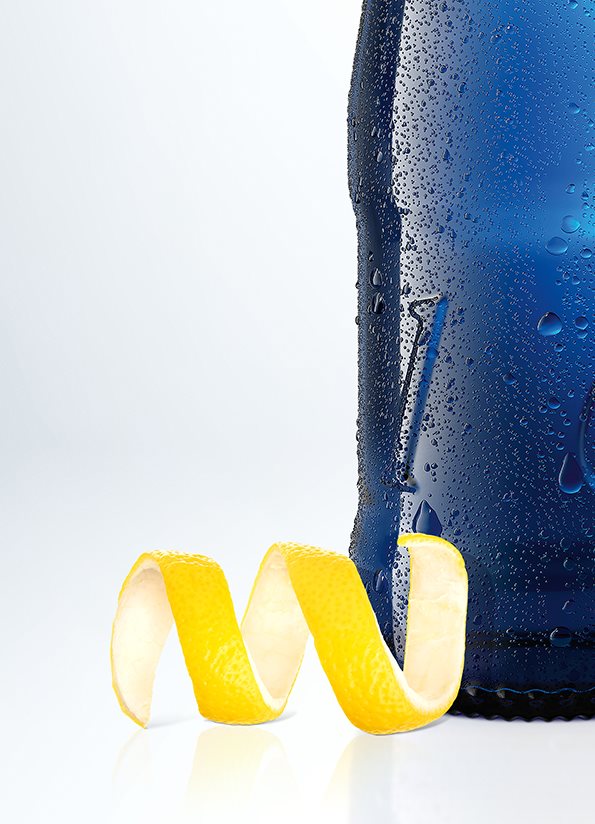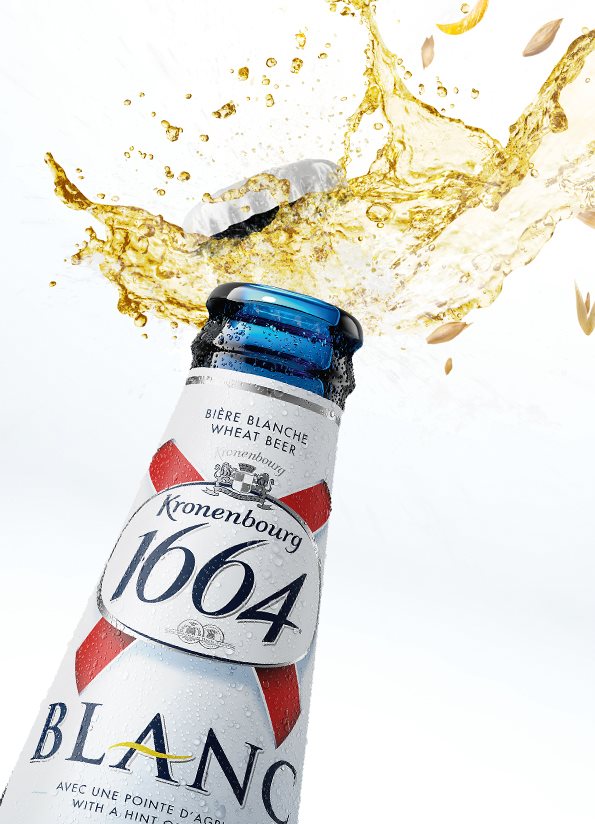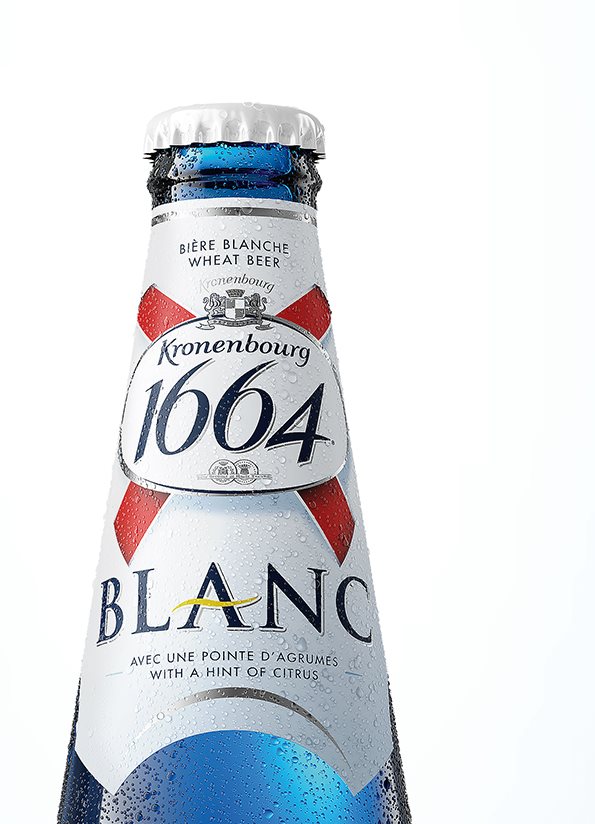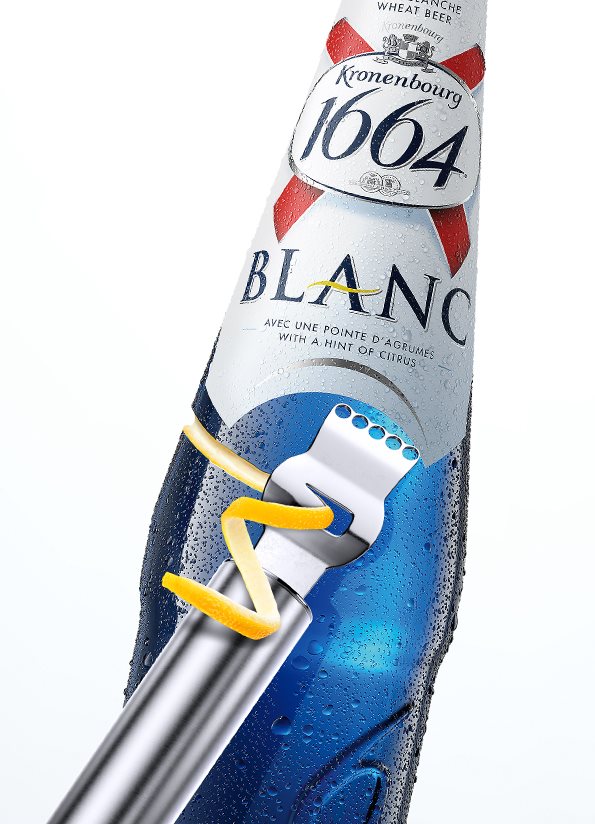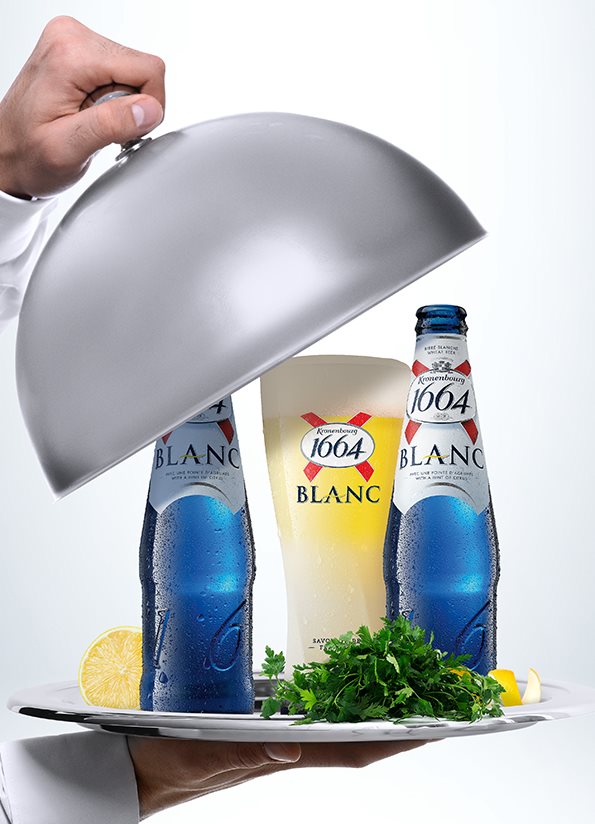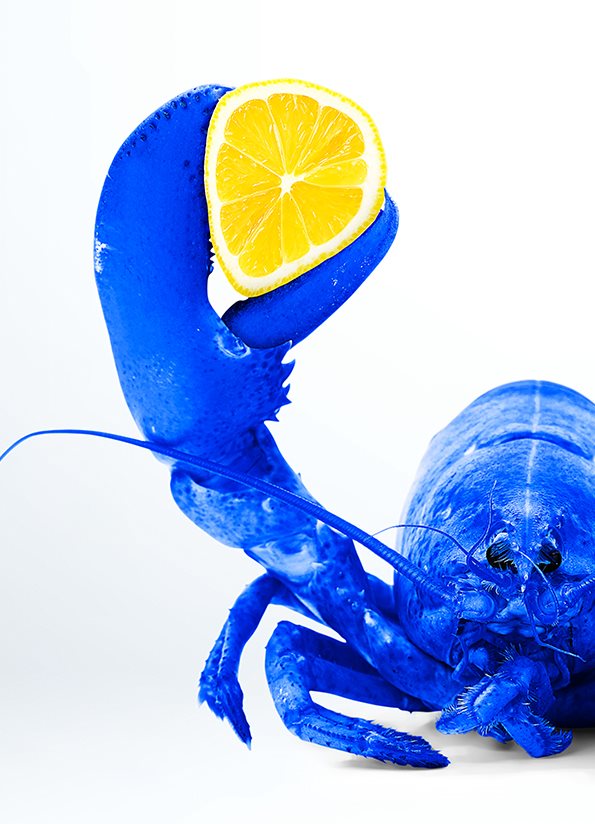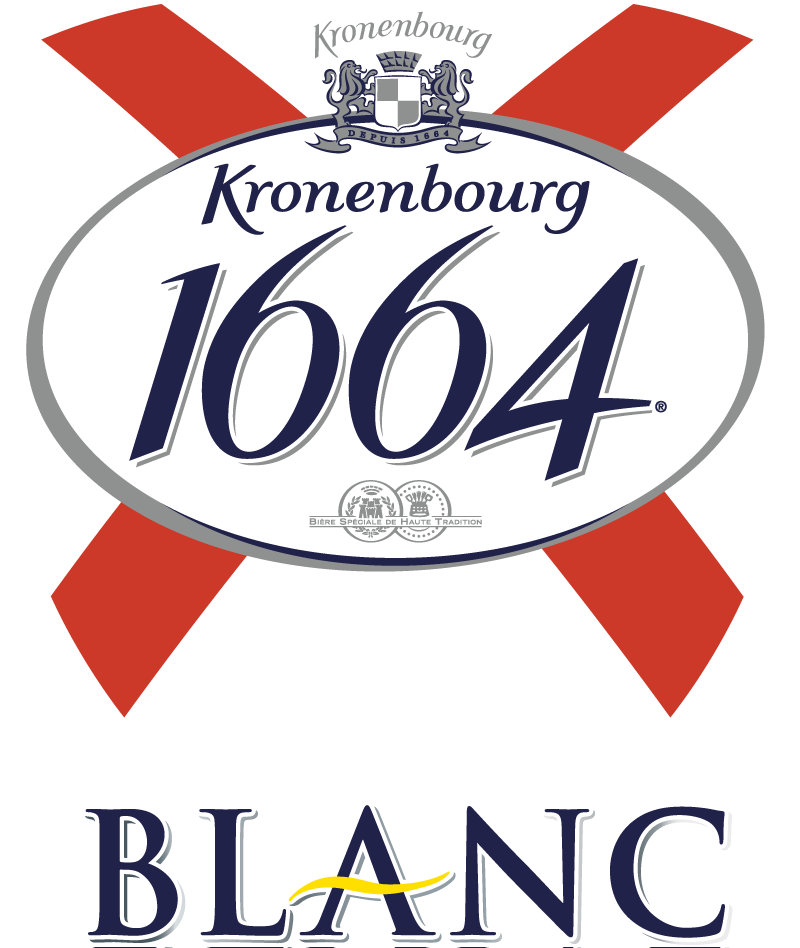Sylvie Lienhart was there when 1664 Blanc was created. And, as a longtime Development Manager at Kronenburg, she knows as perhaps few others do exactly how it stimulates all five senses with its style and French elegance.
REINVENTING TASTE
You can’t talk about the taste of 1664 Blanc without touching on the process of creating it. Especially when you were responsible for tasting each new sample every step of the way.
“The only thing we knew going in was that we wanted to reinvent wheat beer,” Sylvie said. “We didn’t want to completely turn our backs on tradition: Wheat malt was used to ensure maximum smoothness (as well as a rich foam). But from there we used the traditional as a point of departure. Coriander spice was added, just a hint - barely discernible – to give 1664 Blanc a slightly spicy note. Can you taste it?” she asked me. I had to admit that I couldn’t pick out the coriander in an outright way. It isn’t overpowering. “That is because we joined it with a twist of citrus to get that very refreshing, fruity taste.,” Sylvie continued. “It’s a matter of balance – slightly sweet, slightly acidic, not too much of either. That is 1664 Blanc’s signature. We never want it to overpower the tastebuds.”
A LIGHT TOUCH
Sylvie then moved onto how 1664 Blanc also taps into our sense of touch. And not just because we hold the bottle in our hands, feeling its smooth, icy glass. It is there in many aspects of the brew, including its mouthfeel: its texture in your mouth.
“When we develop new products, we take a lot of notes. We try to describe every sensation. It takes a light touch. Very few samples pass to the next stage. Sometimes we are moved – it tastes good! - but it still isn’t right,” Sylvie recounts. “At the end, we aim to have 4 or 5 samples, produce them on a larger scale and then we bring it to our consumers to try! It differs vastly from wine tasting. When we try a new sample, we keep it in our mouths because the aftertaste is an important aspect of beermaking as the mouthfeel,” she tells me, thinking back to the creative process. “We want to explore the texture, to get to know all its nuances. And there are many in 1664 Blanc,” she says, proud of the finished result.
SEEING IT CLEARLY
Our sense of sight plays a big role in preparing our tastebuds to enjoy something, 1664 Blanc included. Sylvie points out that, from the French Blue bottle to the smooth wheat beer itself, our eyes play a leading role in our enjoyment.
“The color of 1664 Blanc is so clear because we use pale malt that hasn’t been roasted or heated along with the wheat malt,” Sylvie says. “We filter it. It has some intentional haziness. But a clear beer automatically feels refreshing and has a lighter taste compared to a dark or amber beer. So even before you’ve tasted it, your brain is saying ‘brightness” & “a refreshing, lighter taste is heading my way,” she tells me, laughing.
Continuing deeper into the subject, Sylvie reflects on the outermost element of the 1664 experience. “The blue bottle is special,” she says. “It is not a traditional color code for beer but it never felt like something this refreshing could be done justice in a traditional dark brown or green bottle.” I can’t disagree with that statement. It is true that our first contact with 1664 Blanc is a visually unique moment. Sylvie goes on to give me more detail. “The blue bottle is also part of 1664 Blanc’s disrupting the old way of doing things. We really thought “Let’s reinvent everything!” And now the blue bottle is iconic.” That is an understatement, especially in France.
HONING IN ON THE AROMA
The relationship between 1664 Blanc and our noses is a marriage made in heaven. Sylvie’s job entails a lot of inhaling and trying to decipher the aromatic codes. She recalls some of the questions asked on the road to knowing when 1664 Blanc was perfect.
“Aroma and taste go hand in hand. Fruity, refreshing, well-balanced…you can’t detect the bitterness by inhaling! But it contributes to the balance and taste of 1664 Blanc. Tasting a beer is much like tasting wine – you look, you judge the visual aspects first: is it clear? Hazy? Is there sediment? Then you inhale it: What comes to mind first? What are the secondary aromas? We take notes at each step to ensure that our finished product smells as spectacular as it tastes.”
SOUNDS LIKE…
Asked how a 1664 Blanc moment could possibly be tied to our sense of sound, Sylvie didn’t hesitate for a moment.
“There are indeed five senses and the sense of sound might not immediately figure into the 1664 Blanc story,” she told me. “But the sound of a cold bottle being opened just screams refreshment,” she said, 100% right. Going on, she proved my initial doubts unfounded. “And for me, that sound is linked to many a long evening enjoyed with friends.” Yes,I have to admit, for me as well. And you?
